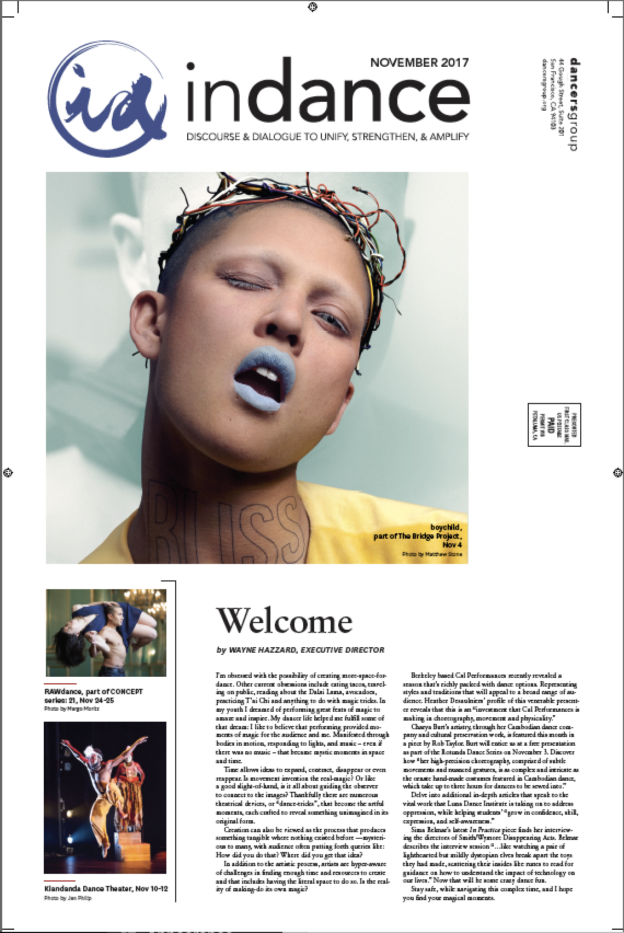 I’m obsessed with the possibility of creating more-space-for-dance. Other current obsessions include eating tacos, traveling on public, reading about the Dalai Lama, avocadoes, practicing T’ai Chi and anything to do with magic tricks. In my youth I dreamed of performing great feats of magic to amaze and inspire. My dancer life helped me fulfill some of that dream: I like to believe that performing provided moments of magic for the audience and me. Manifested through bodies in motion, responding to lights, and music – even if there was no music – that became mystic moments in space and time.
I’m obsessed with the possibility of creating more-space-for-dance. Other current obsessions include eating tacos, traveling on public, reading about the Dalai Lama, avocadoes, practicing T’ai Chi and anything to do with magic tricks. In my youth I dreamed of performing great feats of magic to amaze and inspire. My dancer life helped me fulfill some of that dream: I like to believe that performing provided moments of magic for the audience and me. Manifested through bodies in motion, responding to lights, and music – even if there was no music – that became mystic moments in space and time.
Time allows ideas to expand, contract, disappear or even reappear. Is movement invention the real-magic? Or like a good slight-of-hand, is it all about guiding the observer to connect to the images? Thankfully there are numerous theatrical devices, or “dance-tricks”, that become the artful moments, each crafted to reveal something unimagined in its original form.
Creation can also be viewed as the process that produces something tangible where nothing existed before —mysterious to many, with audience often putting forth queries like: How did you do that? Where did you get that idea?
In addition to the artistic process, artists are hyper-aware of challenges in finding enough time and resources to create and that includes having the literal space to do so. Is the reality of making-do its own magic?
Berkeley based Cal Performances recently revealed a season that’s richly packed with dance options. Representing styles and traditions that will appeal to a broad range of audience. Heather Desaulniers’ profile of this venerable presenter reveals that this is an “investment that Cal Performances is making in choreography, movement and physicality.”
Charya Burt’s artistry, through her Cambodian dance company and cultural preservation work, is featured this month in a piece by Rob Taylor. Burt will entice us at a free presentation as part of the Rotunda Dance Series on November 3. Discover how “her high-precision choreography, comprised of subtle movements and nuanced gestures, is as complex and intricate as the ornate hand-made costumes featured in Cambodian dance, which take up to three hours for dancers to be sewed into.”
Delve into additional in-depth articles that speak to the vital work that Luna Dance Institute is taking on to address oppression, while helping students’ “grow in confidence, skill, expression, and self-awareness.”


